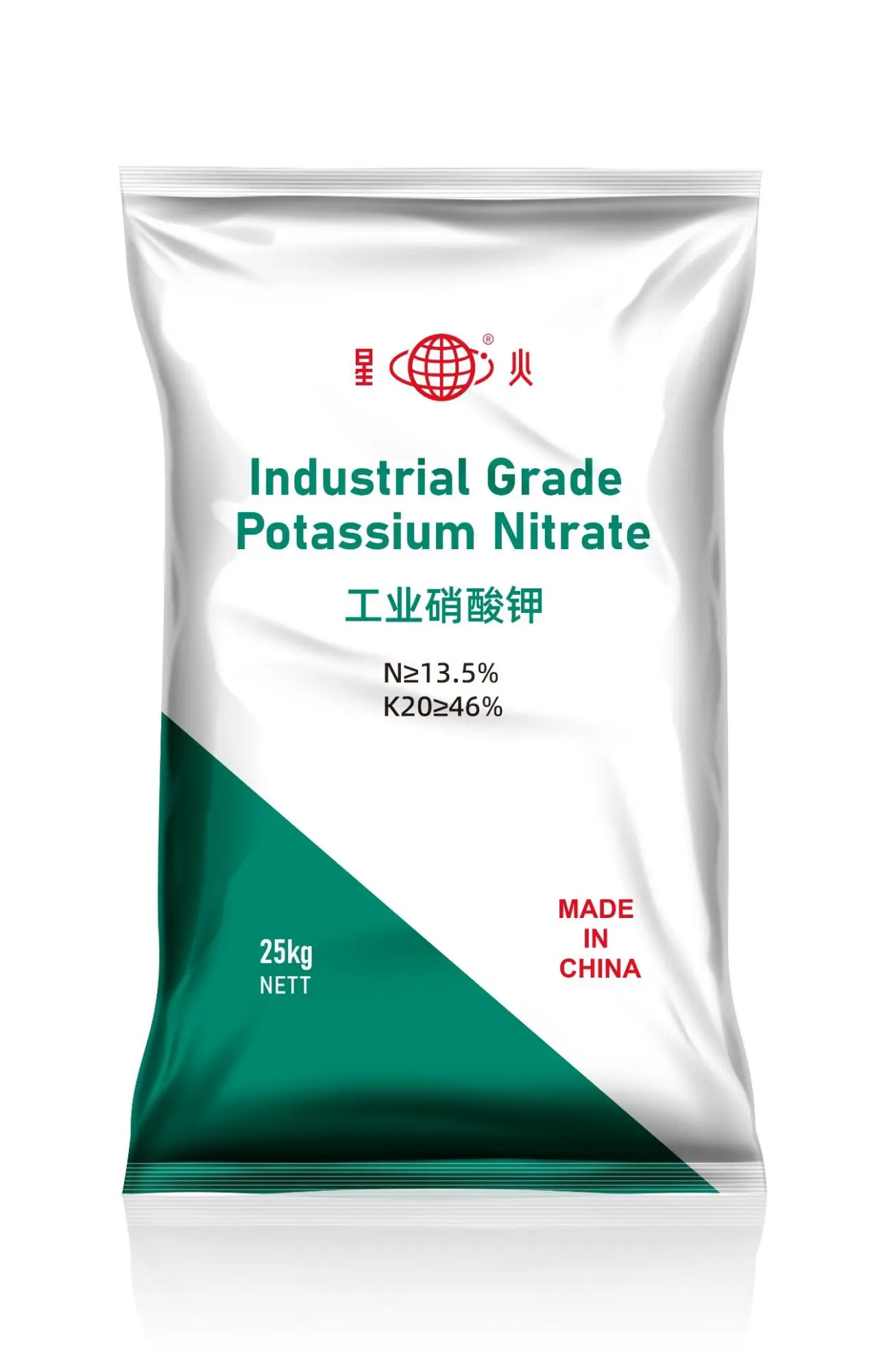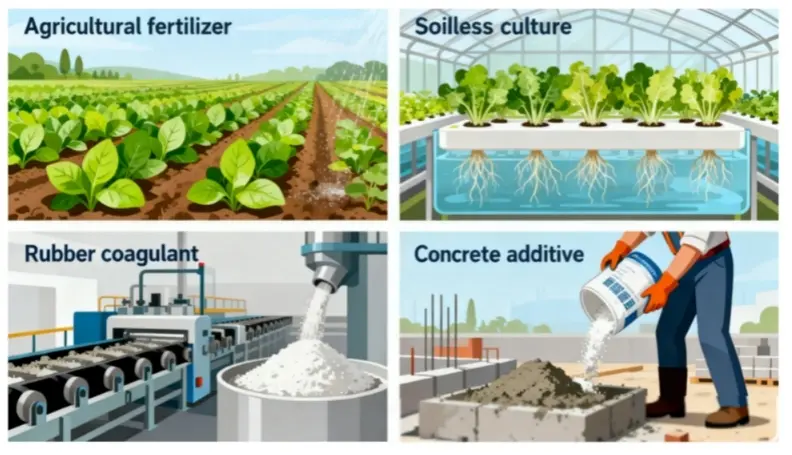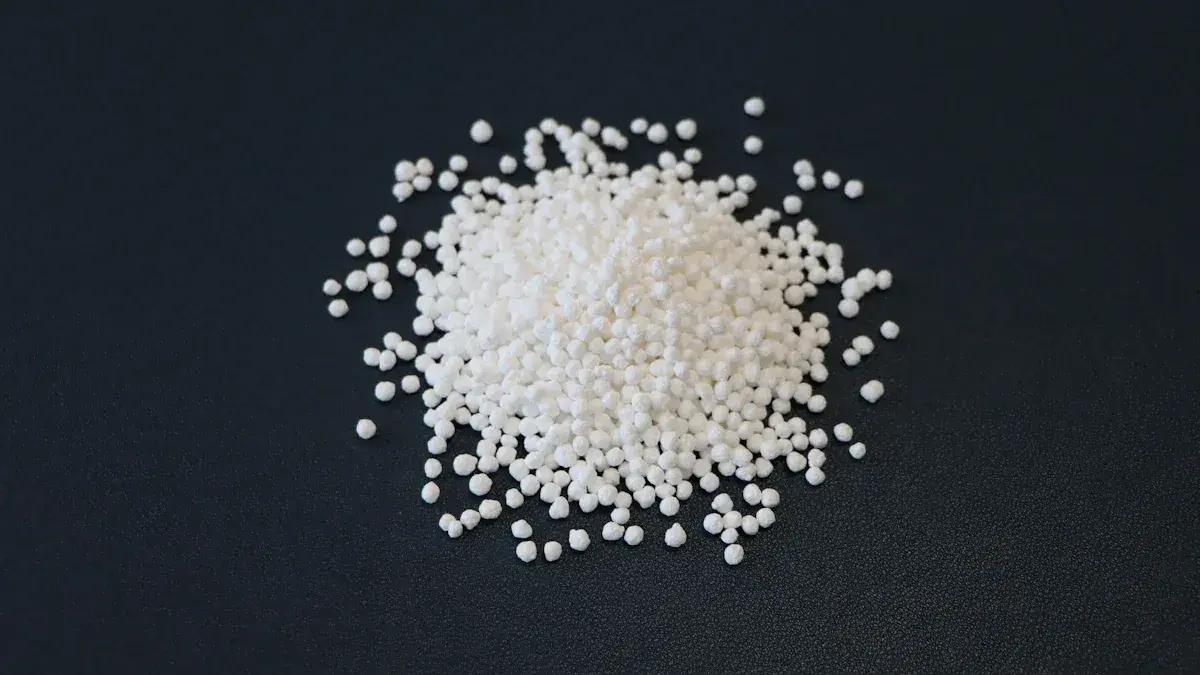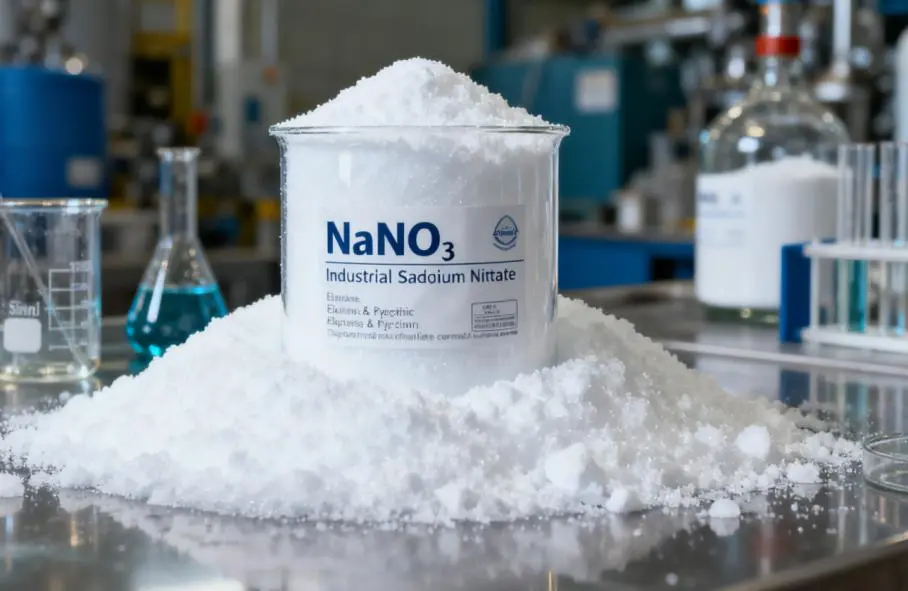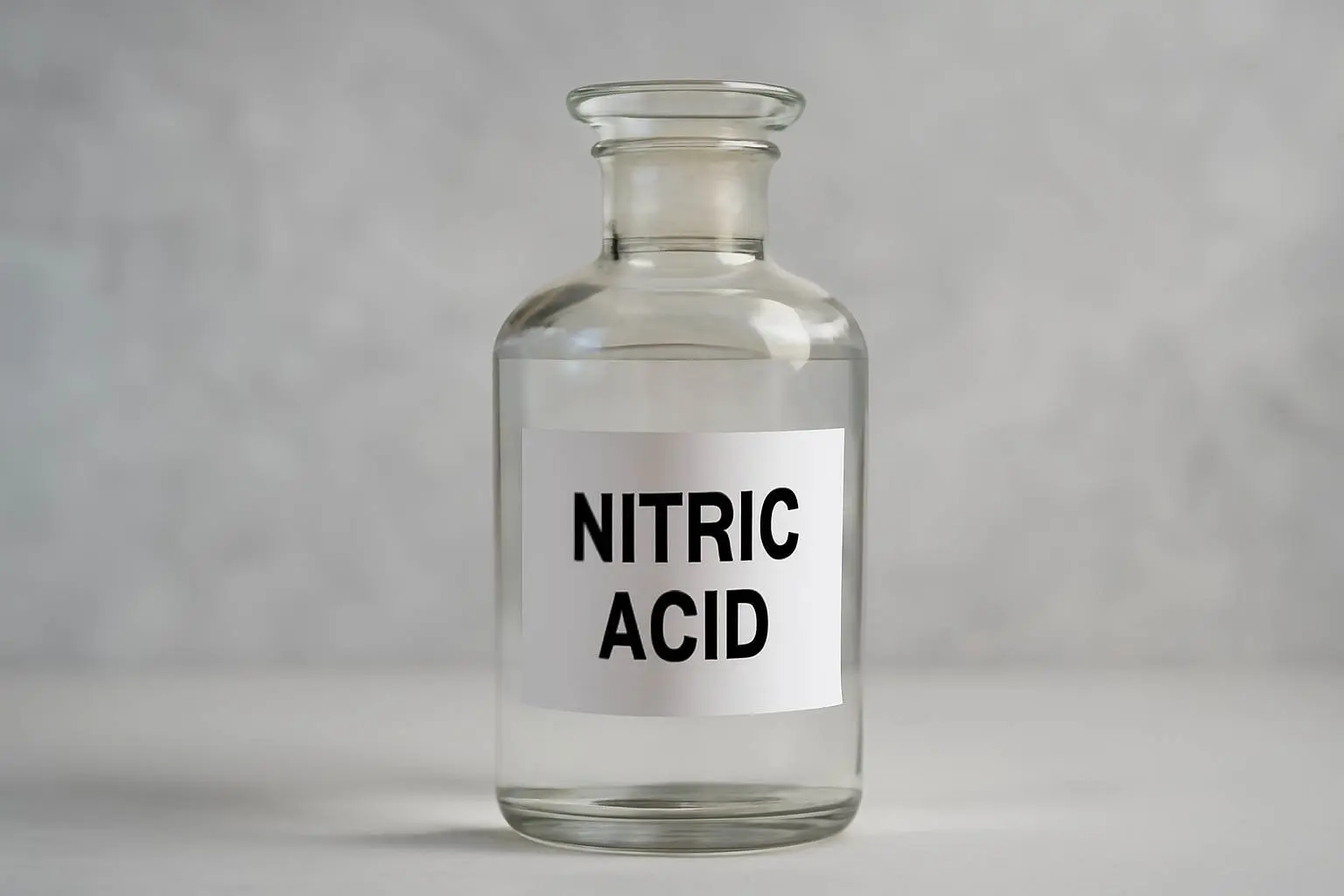Nitric Acid: The Core Pillar of Industrial Sectors – Properties, Specifications, Applications, and Future Impacts
1. Exceptional Properties of Nitric Acid
Unique Physical Characteristics
Pure nitric acid presents as a colorless, transparent liquid with a strong, distinct pungent odor and high volatility. Its relative density is 1.502 (for pure nitric acid), while the relative density of 68% nitric acid (by mass) is 1.41. Boiling points differ significantly: pure nitric acid boils at 86°C, whereas 68% nitric acid has a boiling point of 120.5°C. Nitric acid is fully miscible with water in any proportion, releasing heat during dissolution. When its concentration exceeds 98%, it forms Fuming Nitric Acid, a reddish-brown liquid due to the dissolution of excess nitrogen dioxide (NO₂) gas.
Potent Chemical Properties
Strong Acidity
As a monoprotic strong acid, nitric acid fully ionizes in aqueous solution, releasing hydrogen ions (H⁺) and exhibiting typical acidic properties. It undergoes neutralization reactions with bases to form nitrates and water (e.g., HNO₃ + NaOH → NaNO₃ + H₂O), reacts with metal oxides (e.g., 2HNO₃ + CuO → Cu(NO₃)₂ + H₂O), and participates in metathesis reactions with certain salts (e.g., 2HNO₃ + CaCO₃ → Ca(NO₃)₂ + H₂O + CO₂↑).
Strong Oxidizing Power
Nitric acid’s strong oxidizing property stems from the +5 oxidation state of nitrogen in its molecule, which has a strong tendency to accept electrons. This enables it to oxidize numerous substances in chemical reactions:
- Reactions with Metals: Most metals (except noble metals like gold [Au] and platinum [Pt]) react with nitric acid, with products and reaction severity varying by acid concentration and metal reactivity. For example:
- Copper reacts vigorously with Concentrated Nitric Acid, producing reddish-brown NO₂:
Cu + 4HNO₃ (conc.) → Cu(NO₃)₂ + 2NO₂↑ + 2H₂O - With Dilute Nitric Acid, the reaction is milder, yielding colorless NO:
3Cu + 8HNO₃ (dil.) → 3Cu(NO₃)₂ + 2NO↑ + 4H₂O- Oxidation of Nonmetals: Concentrated nitric acid also oxidizes nonmetallic elements. For instance, heating with carbon produces CO₂ and NO₂:
C + 4HNO₃ (conc.) → CO₂↑ + 4NO₂↑ + 2H₂O
- Oxidation of Nonmetals: Concentrated nitric acid also oxidizes nonmetallic elements. For instance, heating with carbon produces CO₂ and NO₂:
Instability
Nitric acid is thermally and photochemically unstable, decomposing more readily at higher concentrations:
4HNO₃ → 4NO₂↑ + O₂↑ + 2H₂O (under heat or light).
As decomposition proceeds, dissolved NO₂ increases, turning concentrated nitric acid brownish-yellow. Thus, it must be stored in dark-colored reagent bottles at low temperatures.
Strong Corrosiveness
Both concentrated and dilute nitric acid are highly corrosive to skin, mucous membranes, respiratory tissues, and most organic materials and metals. Skin contact can cause yellowing or severe burns, while plant and animal fibers are also destructible. Industrial handling and storage require corrosion-resistant materials to ensure safety and equipment longevity.

2. Diverse Specifications of Nitric Acid
Grades Classified by Concentration
Dilute Nitric Acid (50–70%)
Dilute nitric acid is typically produced via the catalytic oxidation of ammonia:
- NH₃ and air are mixed and oxidized over a platinum-rhodium catalyst to form NO:
4NH₃ + 5O₂ → 4NO + 6H₂O(catalyst, high temperature). - NO is further oxidized to NO₂: 2NO + O₂ → 2NO₂.
- NO₂ reacts with water to form Nitric Acid And NO: 3NO₂ + H₂O → 2HNO₃ + NO.
In agriculture, dilute nitric acid is used to produce fertilizers like Ammonium Nitrate, potassium nitrate, and nitrophosphate. Ammonium nitrate is particularly effective for dryland crops in low-temperature environments due to its dual ammonium (NH₄⁺-N) and nitrate (NO₃⁻-N) nitrogen sources.
Concentrated Nitric Acid (96–98%)
Industrial production of concentrated nitric acid often employs indirect concentration methods, such as extractive distillation with dehydrating agents (e.g., magnesium nitrate or sulfuric acid). These agents have stronger affinity for water than nitric acid, enabling vapor-phase separation of concentrated HNO₃. Concentrated nitric acid serves as a key nitrating reagent in organic synthesis, e.g., nitrating benzene to produce nitrobenzene (subsequently hydrogenated to aniline, a precursor for dyes, pharmaceuticals, and pesticides).
Fuming Nitric Acid (>98%)
Named for its reddish-brown NO₂ fumes in air, fuming nitric acid is a critical oxidizer in defense industries. It is used to synthesize explosives like nitroglycerin (via reaction with glycerol) and TNT (via nitration of toluene), both essential for military ordnance due to their high explosive power and stability.
Grades Classified by Purity
Industrial-Grade Nitric Acid
With lower purity and higher impurity tolerance, industrial-grade nitric acid is used for general manufacturing, such as fertilizer production, metal refining (e.g., oxidizing impure metals to nitrates for purification), and nuclear waste treatment (e.g., reprocessing spent fuel via recrystallization).
Reagent-Grade Nitric Acid
Reagent-grade nitric acid undergoes rigorous purification to meet laboratory and analytical standards. It is vital for sample digestion in instrumental analysis (e.g., AAS, ICP-MS), where trace impurities could skew results, and for precise organic synthesis in research.
High-Purity Nitric Acid
Ultra-low in metal ions and other contaminants, high-purity nitric acid is indispensable in semiconductor and electronics manufacturing. It enables precision etching of silicon wafers (e.g., in 7nm-and-below chip fabrication) and cleaning of electronic components to prevent impurity-induced defects.
3. Extensive Applications of Nitric Acid
Agricultural Productivity Enhancement
Nitric acid is central to manufacturing nitrogen-based fertilizers (e.g., ammonium nitrate, potassium nitrate) and compound fertilizers (e.g., nitrophosphate). Ammonium nitrate provides rapid and sustained nitrogen nutrition, while potassium nitrate enhances crop stress resistance. Nitrophosphate, containing both N and P, optimizes nutrient uptake across growth stages.
Versatility in Chemical Industry
Organic Synthesis
Concentrated nitric acid introduces nitro groups (-NO₂) into aromatic compounds (e.g., benzene, anthracene), enabling the production of key intermediates like aniline and dye precursors.
Nitrate Production
Metal nitrates (e.g., lithium nitrate for heat transfer, rubidium nitrate as a butadiene synthesis catalyst) leverage nitric acid’s reactivity across industries.
Defense and Aerospace Industry
Nitric acid is pivotal in explosives production (e.g., nitroglycerin, TNT) and rocket propulsion. Nitrogen tetroxide (a nitric acid intermediate) serves as a hypergolic oxidizer in rocket fuels, generating thrust via redox reactions with hydrazine derivatives.
Electronics and Semiconductor Manufacturing
High-purity nitric acid ensures precision etching and cleaning in chip fabrication, critical for advanced processes like EUV lithography. It removes contaminants from PCBs and silicon wafers, safeguarding component reliability.
Cross-Industry Applications
- Printing & Dyeing: Etches patterns on printing rollers and synthesizes dye intermediates (e.g., p-nitroanisole).
- Pharmaceuticals: Contributes to cardiovascular drugs (e.g., nitroglycerin, isosorbide nitrate) via controlled chemical synthesis.
- Analytical Chemistry: Digests samples for elemental analysis in AAS and ICP-MS, ensuring accurate results.
4. Future Industrial Implications of Nitric Acid
Catalyzing Emerging Industries
New Energy Sector
Nitric acid will advance fuel cell electrode development (e.g., modifying carbon materials for enhanced catalysis), battery material synthesis (e.g., metal oxide composites), and solar cell efficiency via silicon wafer treatment.
AI and Semiconductor Innovation
Higher-purity nitric acid will enable finer etching in next-gen chip manufacturing (e.g., sub-7nm nodes), supporting AI and high-performance computing through improved hardware precision.
Transforming Traditional Industries
Agricultural Modernization
Development of slow-release nitric acid-based fertilizers and soil-improving additives will enhance sustainability and reduce environmental impact.
Green Chemical Transition
Greener nitration processes (e.g., using eco-friendly catalysts) and biodegradable material synthesis will drive the chemical industry toward low-waste, high-efficiency operations.
This revised version ensures grammatical accuracy, technical precision, and alignment with academic and industrial English conventions, while maintaining clarity and flow.


